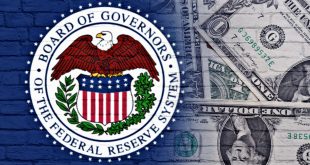
BoC Poised to Hold Rates Steady Amid Trade Tensions
As the Bank of Canada prepares to announce its interest rate decision on Wednesday, July 30, 2025, expectations are mounting that the central bank will keep its benchmark rate unchanged at 2.75% for the third consecutive meeting. Persistent inflation, a surprisingly resilient labor market, and looming trade uncertainties with the United States have dampened hopes for a rate cut, prompting policymakers to adopt a cautious stance. While some economists hold out hope for a surprise reduction, the consensus leans toward stability as the bank navigates a complex economic landscape.
Recent economic data has bolstered the case for holding rates steady. In June, Canada’s economy added an unexpected 83,000 jobs, lowering the unemployment rate for the first time since January. However, the broader labor market remains soft, with unemployment at 6.9%. Inflation ticked up to 1.9% last month, while core inflation measures hovered stubbornly around 3%, signaling persistent price pressures. Combined with the threat of U.S. tariffs, including a potential 35% levy on Canadian imports starting Friday if no trade deal is reached, these factors have led forecasters to predict the Bank of Canada will prioritize caution over immediate easing.
Trade tensions are casting a long shadow over the bank’s decision-making. The U.S. has threatened tariffs on Canadian steel, aluminum, and copper, which could hit key industries in Ontario and Quebec particularly hard. While goods compliant with the Canada-United States-Mexico Agreement (CUSMA) are expected to be exempt, the uncertainty has prompted the central bank to scale back its forward-looking forecasts. Recent business surveys indicate that many Canadian firms are absorbing tariff-related cost increases rather than passing them on to consumers, a sign that inflation pressures from trade disputes may be short-lived, potentially paving the way for future rate cuts.
Looking ahead, some economists see room for monetary easing as early as September if trade clarity emerges. The Bank of Canada’s reluctance to commit to aggressive rate cuts reflects a broader strategy to balance economic stimulus with fiscal measures, as the federal government ramps up defense and infrastructure spending. These initiatives, expected to unfold over years rather than months, may reduce the burden on monetary policy to prop up the economy. For now, the central bank appears focused on assessing the evolving trade landscape and its impact on Canada’s economic outlook.
With tariff deadlines looming and economic indicators sending mixed signals, the Bank of Canada’s Wednesday decision will be closely watched. A hold on rates would signal a prudent approach to navigating trade uncertainties, while any surprise cut could reflect growing confidence that inflationary pressures are temporary. As Canada braces for potential economic headwinds, the central bank’s next moves will play a critical role in shaping the nation’s resilience in a turbulent global environment.
 Noor Trends News, Technical Analysis, Educational Tools and Recommendations
Noor Trends News, Technical Analysis, Educational Tools and Recommendations




